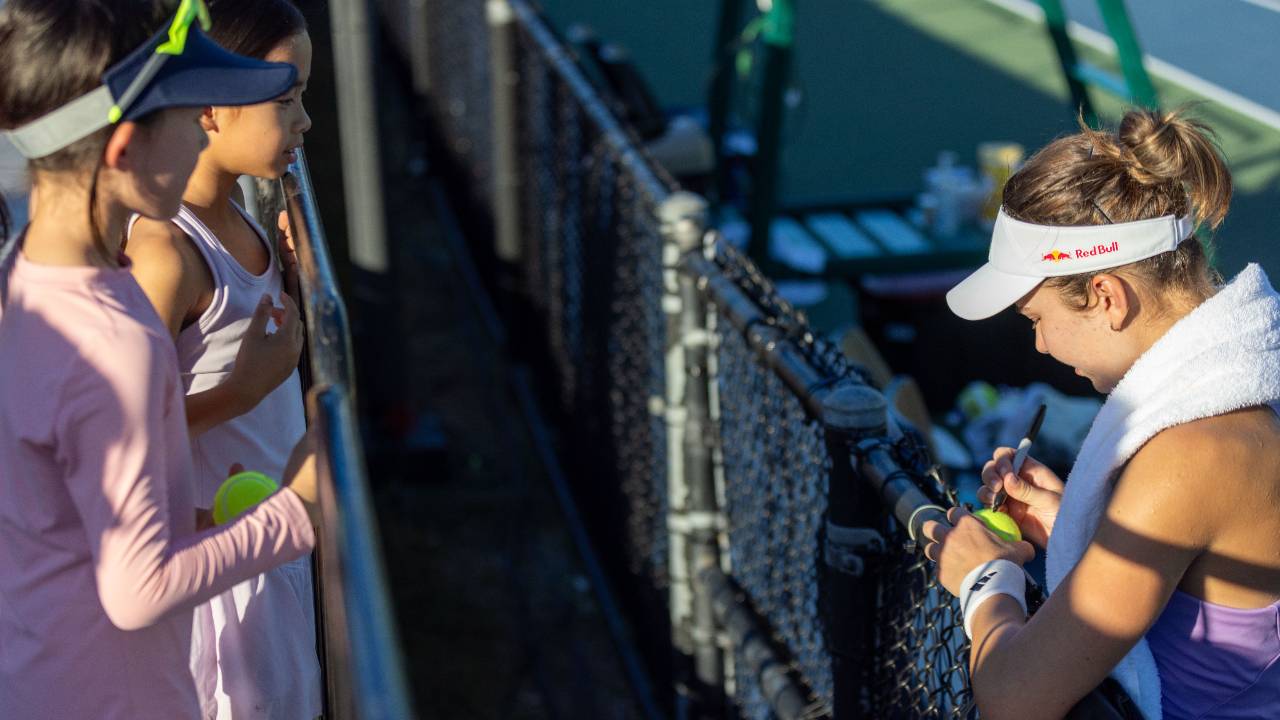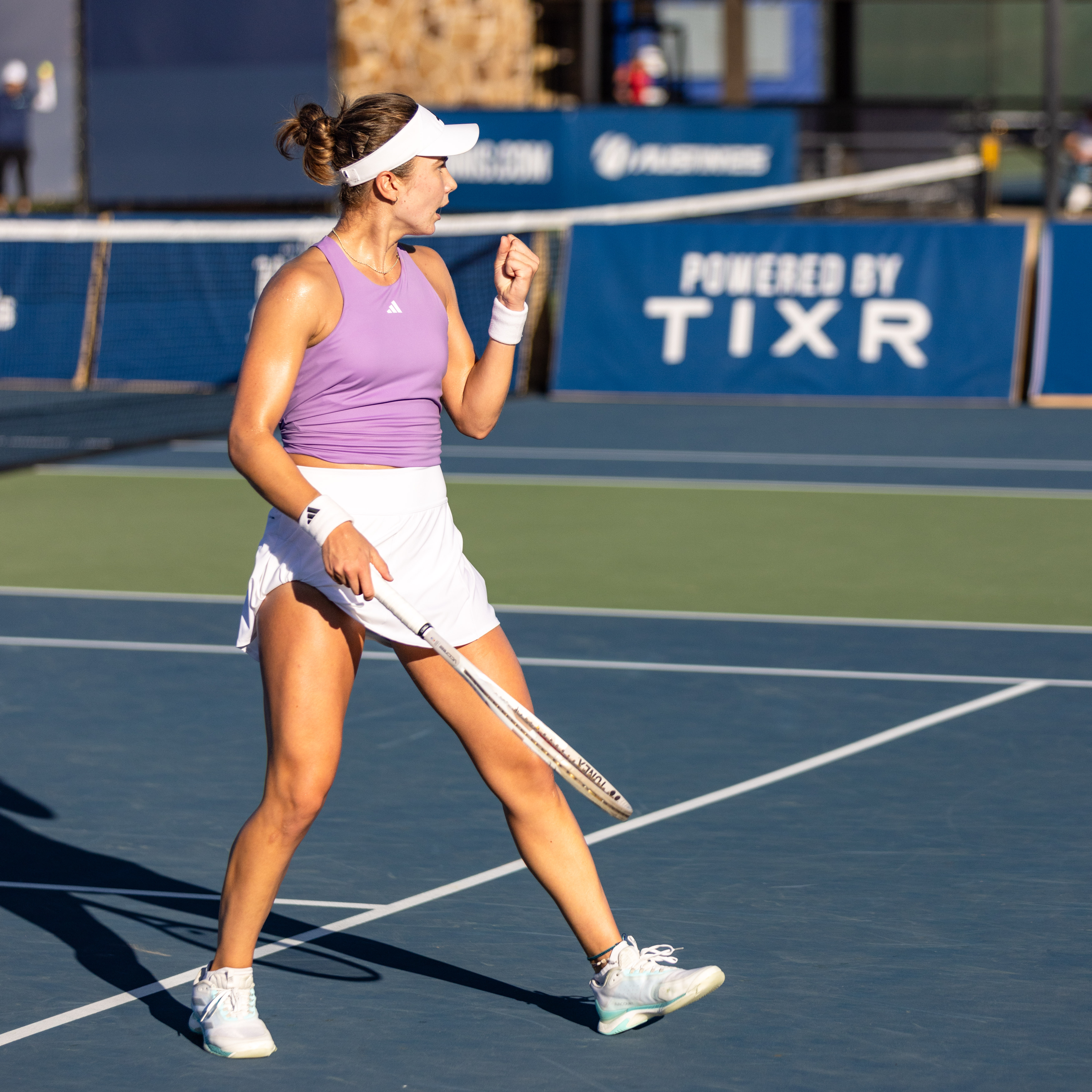Behind the Glass: Day Four – When Comfort Returns
Nov 07, 2025
By the fourth day of the Austin 125, the atmosphere had changed again. The tension of the opening rounds had dissolved into something steadier and more familiar. The early-week adrenaline was gone. What remained was rhythm.
 Walking around the grounds, I saw players finally breathing inside their routines. The tournament that had once felt like a sprint now moved at the pace of recovery. There was more sitting on benches, more time spent perched in umpire chairs, more laughter among coaches. The edges had softened. Everyone seemed to know where they belonged.
Walking around the grounds, I saw players finally breathing inside their routines. The tournament that had once felt like a sprint now moved at the pace of recovery. There was more sitting on benches, more time spent perched in umpire chairs, more laughter among coaches. The edges had softened. Everyone seemed to know where they belonged.
The Settling
Tournament life has a strange cadence. The first two days are chaos, full of arrivals, match calls, and emotional static. By Day 3, the focus turns to practice. By Day 4, familiarity takes hold. Players learn the geography of the site, find their favorite warm-up courts, and settle into a predictable loop of training, resting, and competing.
Today was another day of practice observation, but it carried a different tone. The athletes were looser, their interactions easier. The pressure that once lived in every movement had been replaced by curiosity. The first-round jitters were gone, and what emerged instead was a sense of comfort in craft.
Routines at Rest
The most noticeable difference from earlier in the week was the pacing. Players took their time moving between courts, talking more with their coaches, stretching a little longer before and after sets. Routines that had felt rushed on Day One now unfolded at human speed. You could sense the collective pulse of the tournament slowing, not from fatigue, but from familiarity. Everyone knew what the day required and how to manage their energy inside it.
The doubles players, in particular, radiated that calm. Many had already shifted their mental focus after early singles exits. Their body language suggested relief. The stress of individual results had given way to the shared energy of partnership.
 A Match Within the Match
A Match Within the Match
One of the highlights of the day came from watching Jennifer Jackson, who trains with Coach Doug Davis, team up with her singles opponent from earlier in the week. The two entered the doubles draw together and faced the Corley sisters, who have grown up as a unit and play with the synchronicity that only siblings can produce.
Jackson and her new partner lost 6-4, 6-2, but they played with visible enjoyment. There was an ease between them, a willingness to laugh at missed opportunities, and an understanding that this stage of a career is about learning how to connect, not just compete. Seeing a player transition so fluidly from adversary to ally in less than forty-eight hours was a reminder of how small and intertwined this sport really is.
The Weight of Composure
Later, I found myself back at stadium court, watching the top seed Iva Jovic play her second singles match. She seemed in full control, leading 6-1, 4-1, when her opponent appeared to tweak her left knee during a first serve. After a medical timeout, the match resumed. The opponent double-faulted, then won the next six games in a row.
For the first time all week, I saw the usually unflappable Jovic show her age. Not through anger or theatrics, but through subtler signals. She began glancing toward line calls, hoping for favors that never came. A few were on balls that were clearly wide, not the close calls that justify protest. It was the look of a young competitor navigating frustration in real time.
It was not until she broke serve to go ahead 5-2 in the final set that her composure fully returned. The focus came back into her body. The eye contact steadied. The bounce between points grew deliberate again. It was a masterclass in self-correction.
 I probably noticed what others did not because I have spent so much time designing systems to measure and train such moments. These micro-behaviors of focus, recovery, and recalibration are the blueprint of emotional architecture, the part of performance that cannot be taught by instruction alone.
I probably noticed what others did not because I have spent so much time designing systems to measure and train such moments. These micro-behaviors of focus, recovery, and recalibration are the blueprint of emotional architecture, the part of performance that cannot be taught by instruction alone.
The Quiet Lessons
Day Four confirmed that the true shape of a tournament does not come from results but from rhythm. Once the initial turbulence passes, the event settles into a kind of equilibrium. The players who remain are those who can find comfort in repetition, who can locate calm even inside competition.
As the week winds down, I find myself wondering how many of these players will remain in Austin for next week’s ITF $50K, which is also being held here at Austin Tennis Academy. It would make sense. Travel costs are high, and the conditions are ideal. For players chasing points and match rhythm, staying put might be the smartest move. The field will likely mix returning veterans with younger players extending their stay, and the practice courts may take on a very different texture, less stress and more rebuilding.
By now, the Austin 125 feels less like a sporting event and more like an ecosystem in balance. The routines have taken root. The environment is doing its work. And the architecture of performance, emotional, physical, and systemic, continues to reveal itself one quiet adjustment at a time.
Never Miss a Moment
Join the mailing list to ensure you stay up to date on all things real.
I hate SPAM too. I'll never sell your information.
